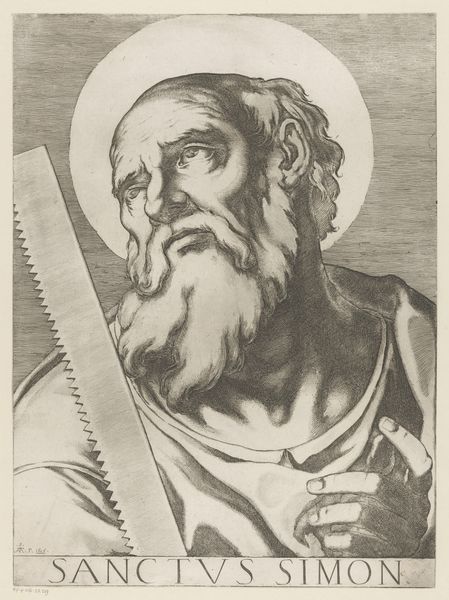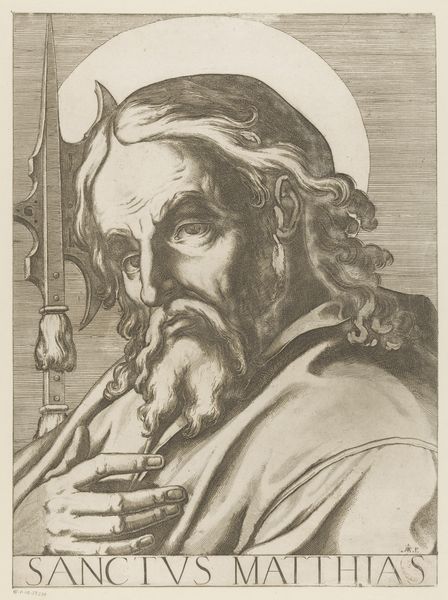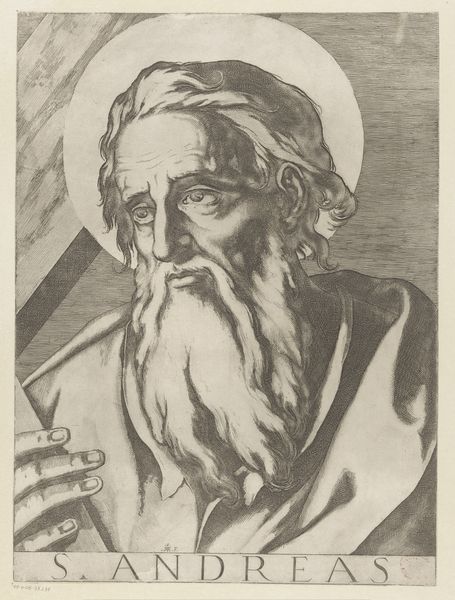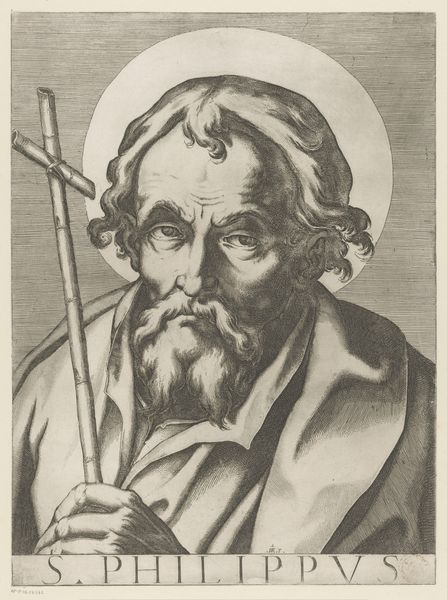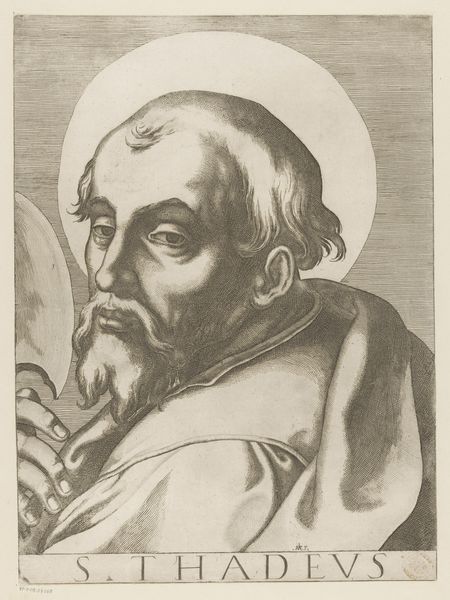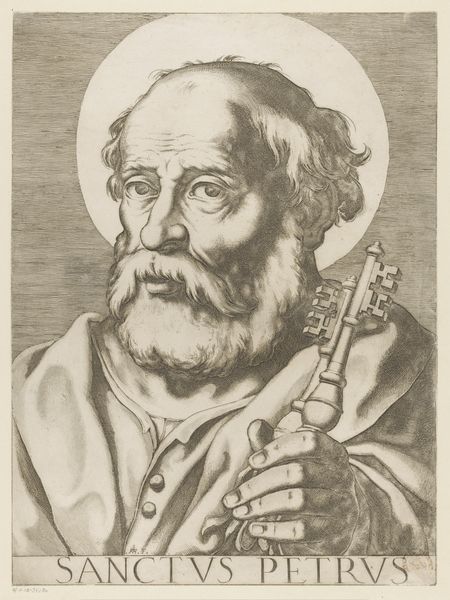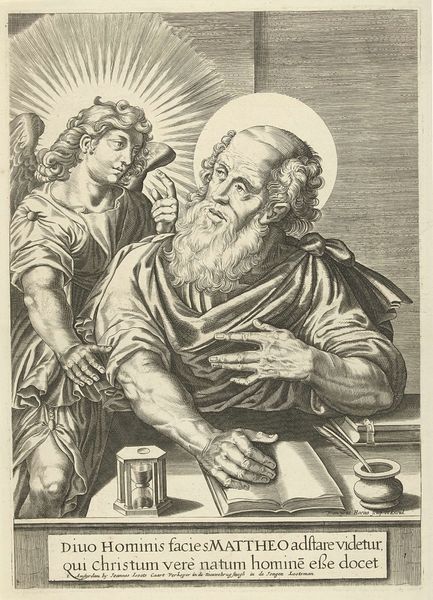
print, engraving
#
portrait
# print
#
portrait drawing
#
italian-renaissance
#
engraving
Dimensions: height 506 mm, width 374 mm
Copyright: Rijks Museum: Open Domain
Raffaello Schiaminossi made this print of Saint Bartholomew in the early 17th century. It's an etching, meaning the artist covered a metal plate with a waxy ground, drew an image into it with a sharp needle, and then bathed the plate in acid. The acid bit into the exposed lines, allowing them to hold ink. Etching was relatively new at this time, a revolutionary process. Compared to engraving, which required enormous strength to cut directly into the metal, etching allowed for a much more fluid and expressive line. You can see that in the Saint's beard and the folds of his cloak, described with remarkable efficiency. This ease of production meant prints could be made and sold in great numbers. That's important, because it connects the image to the burgeoning world of capitalism. Schiaminossi and other printmakers weren't just artists; they were also entrepreneurs, responding to a growing demand for affordable images. The skill required to make an etching like this shouldn't be underestimated, but neither should its place in a changing economy.
Comments
No comments
Be the first to comment and join the conversation on the ultimate creative platform.
